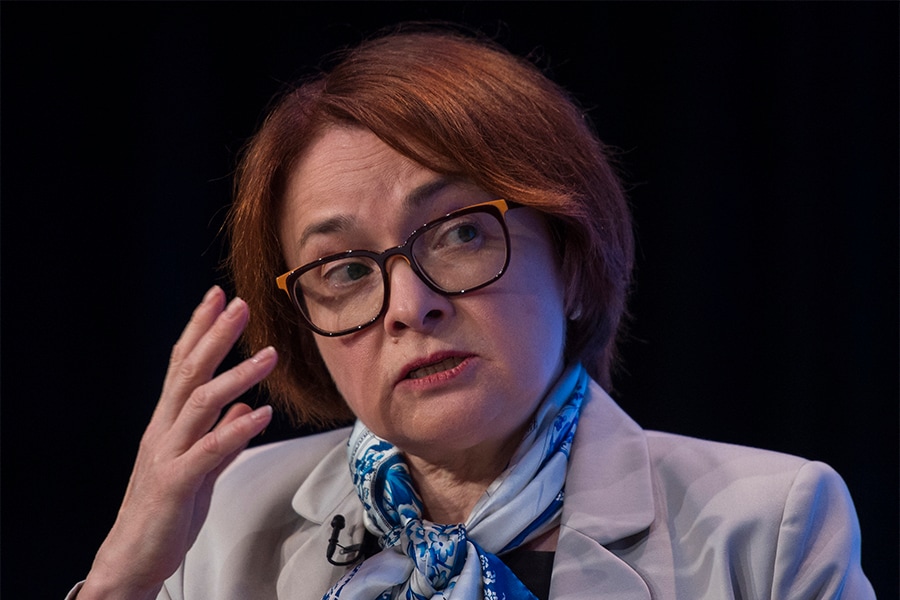
Elvira Nabiullina: The woman steering Russia's war economy
In the world of central bankers, among technocrats tasked with keeping prices under control and financial systems stable, Nabiullina became a rising star for using orthodox policies to manage an unruly economy often tethered to the price of oil
 Elvira Nabiullina, a Russian economist and current head of the central bank of Russia. Image: Andrew Caballero-Reynolds/AFP
Elvira Nabiullina, a Russian economist and current head of the central bank of Russia. Image: Andrew Caballero-Reynolds/AFP
For the second time in less than a decade, Elvira Nabiullina is steering Russia’s economy through treacherous waters.
In 2014, facing a collapsing ruble and soaring inflation after barely a year as head of the Central Bank of Russia, Nabiullina forced the institution into the modern era of economic policymaking by sharply raising interest rates. The politically risky move slowed the economy, tamed soaring prices and won her an international reputation as a tough decision maker.
In the world of central bankers, among technocrats tasked with keeping prices under control and financial systems stable, Nabiullina became a rising star for using orthodox policies to manage an unruly economy often tethered to the price of oil. In 2015, she was named Central Bank Governor of the Year by Euromoney magazine. Three years later, Christine Lagarde, then the head of the International Monetary Fund, effused that Nabiullina could make “central banking sing.”
Now it falls to Nabiullina to steer Russia’s economy through a deep recession, and to keep its financial system, cut off from much of the rest of the world, intact. The challenge follows years she spent strengthening Russia’s financial defenses against the kind of powerful sanctions that have been wielded in response to President Vladimir Putin’s geopolitical aggression.
She has guided the extraordinary rebound of Russia’s currency, which lost one-quarter of its value within days of the Feb. 24 invasion of Ukraine. The central bank took aggressive measures to stop large sums of money from leaving the country, arresting a panic in markets and halting a potential run on the banking system.
©2019 New York Times News Service







